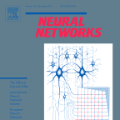Recently, brain-inspired computing models have shown great potential to outperform today's deep learning solutions in terms of robustness and energy efficiency. Particularly, Spiking Neural Networks (SNNs) and HyperDimensional Computing (HDC) have shown promising results in enabling efficient and robust cognitive learning. Despite the success, these two brain-inspired models have different strengths. While SNN mimics the physical properties of the human brain, HDC models the brain on a more abstract and functional level. Their design philosophies demonstrate complementary patterns that motivate their combination. With the help of the classical psychological model on memory, we propose SpikeHD, the first framework that fundamentally combines Spiking neural network and hyperdimensional computing. SpikeHD generates a scalable and strong cognitive learning system that better mimics brain functionality. SpikeHD exploits spiking neural networks to extract low-level features by preserving the spatial and temporal correlation of raw event-based spike data. Then, it utilizes HDC to operate over SNN output by mapping the signal into high-dimensional space, learning the abstract information, and classifying the data. Our extensive evaluation on a set of benchmark classification problems shows that SpikeHD provides the following benefit compared to SNN architecture: (1) significantly enhance learning capability by exploiting two-stage information processing, (2) enables substantial robustness to noise and failure, and (3) reduces the network size and required parameters to learn complex information.
翻译:最近,由大脑启发的计算模型显示,在强健和能源效率方面,它们具有超越当今深层次学习解决方案的巨大潜力。特别是,Spiking神经网络(SNN)和超二元计算(HDC)在促成高效和强健的认知学习方面显示出了可喜的成果。尽管取得了成功,但这两种由大脑启发的模型具有不同的长处。虽然SNM模仿了人类大脑的物理特性,但HDC在更抽象和功能层面上模拟大脑。它们的设计理念展示了激励其结合的互补模式。在记忆经典心理模型的帮助下,我们提出了Spiking神经网络(Spik Neural Net) 和超多元计算(HD) 的第一个框架,从根本上将Spiking神经网络和超元计算结合起来。SpikingHD生成一个可扩展和强大的认知学习系统系统系统系统学习系统功能,从而大大提升SKMD数据库的升级能力。





